
Тип бассейна:
Подтип бассейна:
Класс бассейна:
Возраст бассейна:
Тип полезных ископаемых:
Геологический возраст начало:
Геологический возраст конец:
Площадь: 47445.79 км²
Offshore Indus Basin
Offshore Indus Basin located between Murray Ridge and Laccadive Ridge is mainly a Passive Margin basin.
Arabian Sea extends from border of Oman in west to Laccadive Ridge in east toward India; in South to Carlsberg Ridge.
The Pakistan Offshore represents a triple junction of the Indian, Eurasian and Arabian plates (Fig. 1). The Carlsberg ridge, which extends northwest and terminates into the Owen Fracture Zone, is the spreading center along which new oceanic crust of the Indian Ocean is forming (Jacob and Quittmeyer 1979). The Owen Fracture Zone is delineated as a transform boundary between the Arabian and Indian plates (Fig. 1) extending further northward and connecting to the Ornach Nal-Chaman fault through the Murray Ridge. The Murray Ridge is a strike slip Indian– Arabian plate boundary with a component of extension (Edwards et al. 2000). This ridge is a major structural high because the Miocene and the younger beds are tilted and eroded on the sea floor at its flanks. The Kirthar fold belt is an offshore equivalent of the Murray Ridge (Clift et al. 2002a, b; Edwards et al. 2000), which is underlain by thin continental crust. The northern part of the Murray Ridge is characterized by fault-bounded grabens (Edwards et al. 2000) and flanked to the northwest and southeast by broader, lower-lying topographic highs. Here, grabens are delineated by faults with smaller surface throws. The presence of a thick crust in deep water settings indicates that either a considerable thickness of igneous material was added to normal oceanic crust, or that this crust is continental in origin (Clift et al. 2002a, b). The Indian-Eurasian collision had a major effect on the tectonic development of the Arabian Sea region and the nature of the sedimentary record along the margins. Seismic and provenance data from the Pakistan margin and Owen ridge show that fans sedimentation triggered by collision dates back at least to the mid-Eocene time (Clift et al. 2000, 2001).

Fig. 1 Bathymetric map showing location of lines and wells.
The major plate boundaries are shown. Double lines on the map represent oceanic spreading ridges; thick dashed lines show extensional plate boundaries; single lines indicate strike-slip faults; solid triangles show ocean-continent collision and open triangles mark continentcontinent collision (modified after Clift et al. 2001 and Jacob and Quittmeyer 1979)
The Offshore Indus Basin is a gas-prone region on the edge of the Indian continental crust and adjacent oceanic crust. Wandrey et al. (2004) reported the source rocks to be Oligocene, Miocene and Pliocene mudstones of deltaic type with total organic content (TOC) ranging from 0.5 to [3.5 % with an average of 1.4 %. The organic matter is composed of type II and type III kerogens while maturation occurred during the late Miocene and Pliocene with generation continuing today (Wandrey et al. 2004).
Shelf carbonates (Ghazij formation) ranging from the mid-Eocene to the Oligocene ages dominate the Offshore Indus Delta. These formations are equivalent to the onshore Laki, Kirthar and Nari formations (Daley and Alam 2002).
Sembar (Early Cretaceous) and Mughalkot (Late Cretaceous) formations have been encountered in deep wells such as Dabbo Creek-1, Korangi Creek-1, and Patiani Creek-1 in the Indus Delta, all drilled by Sun-Oil from 1962 to 1965 (Daley and Alam 2002). The Offshore Indus Basin and Karachi platform are characterized by thick mid-late Miocene interbedded sand and shale (Gaj formation), that are interpreted as being shallow water shelf or deltaic deposits (Daley and Alam 2002). It is then overlain by a muddy shelf of Pliocene age or younger which has been successively cut by extensive canyon phases of the proto-Indus (Daley and Alam 2002). Figure 2 shows the generalized stratigraphy of the Offshore Indus Basin. Attached carbonate platforms of the Paleocene and early Eocene age formed along the continental margin, while detached platforms were formed on volcanic seamounts within the Offshore Indus Basin during the early post-rift phase. Pelagic sediments were deposited in the intervening structural lows between the carbonate banks.
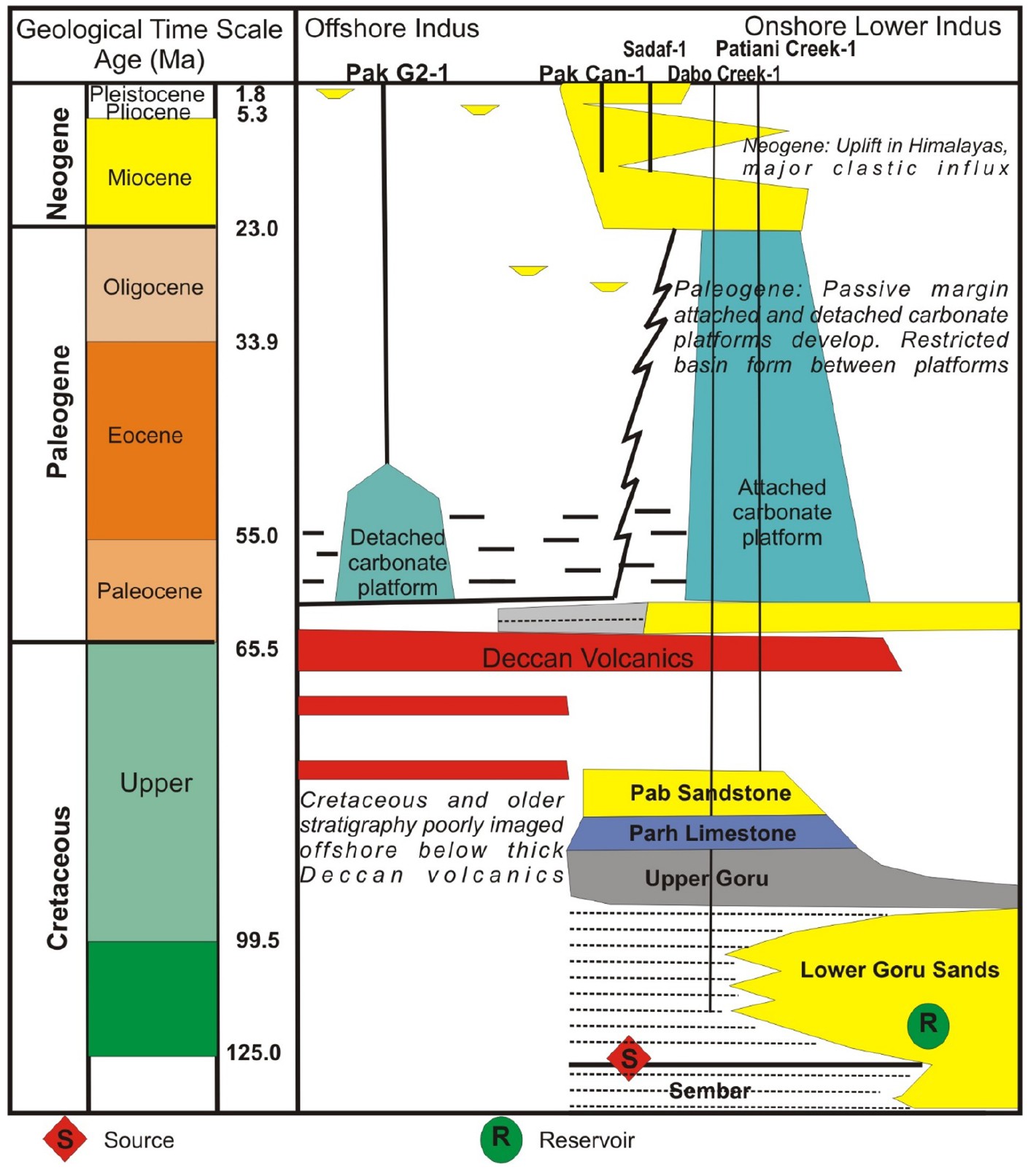
Fig. 2 Generalized stratigraphy of the Offshore Indus Basin, Pakistan (modified after Carmichael et al. 2009)
The northward drift of the Indian plate was accompanied by the major clastic influx from the Indus River leading to the deposition of Oligocene to Recent sediments (Carmichael et al. 2009).
PETROLEUM SYSTEM
Source Rock: 1. Paleocene section with TOC ranging from 1-3%.
Play Types Miocene Delta 1. Tested by 5 wells. 2. Few off structure & and few didn’t find reservoir.
Reservoir and Seal Pairs: 1. Miocene deltaic sands act reservoir. 2. The mud-clay dominated sediments. 3. Intra-formational shales packages of Miocene. 4. Oligocene may act as seal for potential reservoirs.
Trap Geometries: 1. Fault block and rollover against growth faults in shelf margin basin. 2. Pinch outs are also observed.
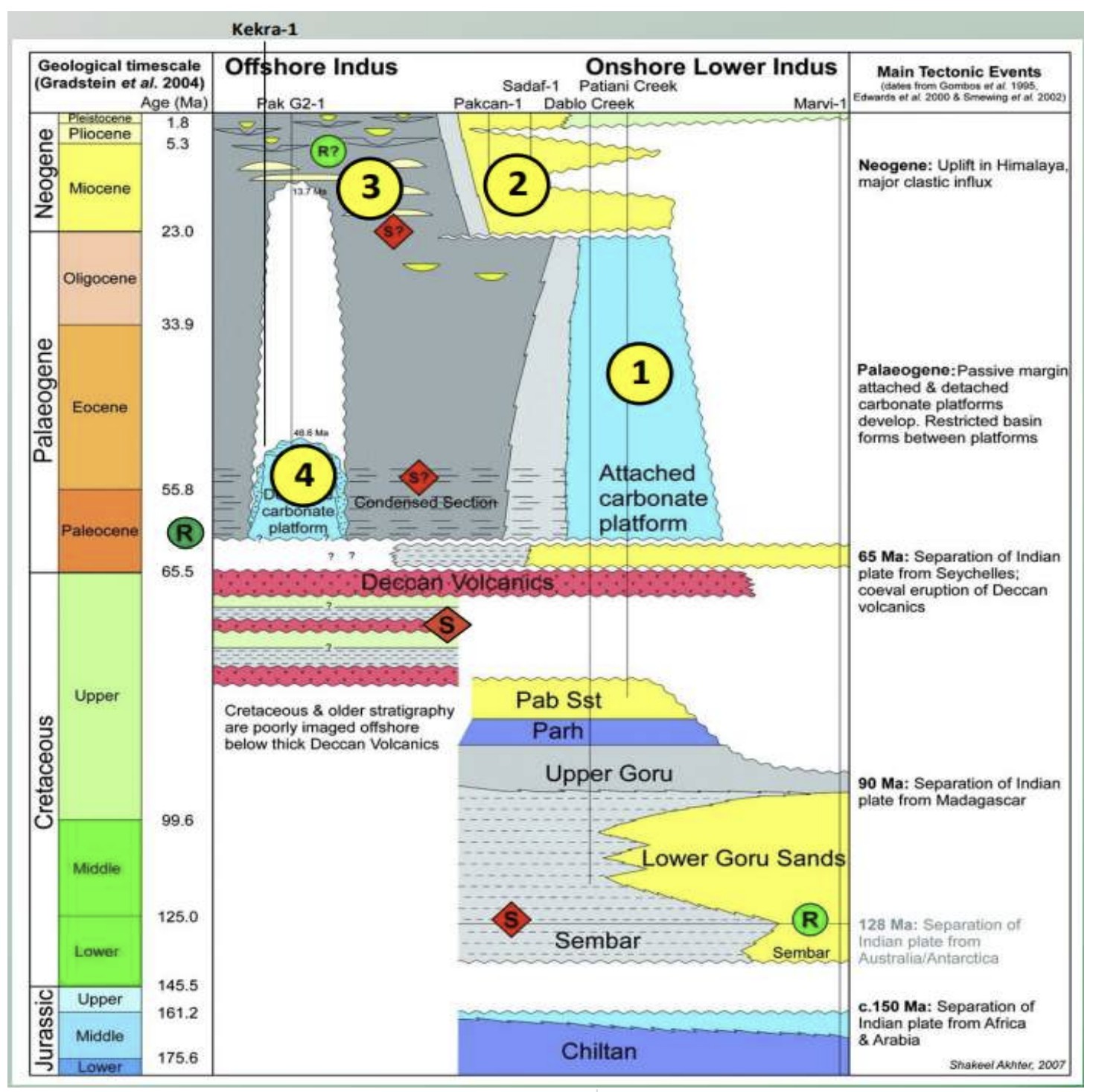
RESERVOIR CORRELATIONS INDUS & ADJACENT AREAS
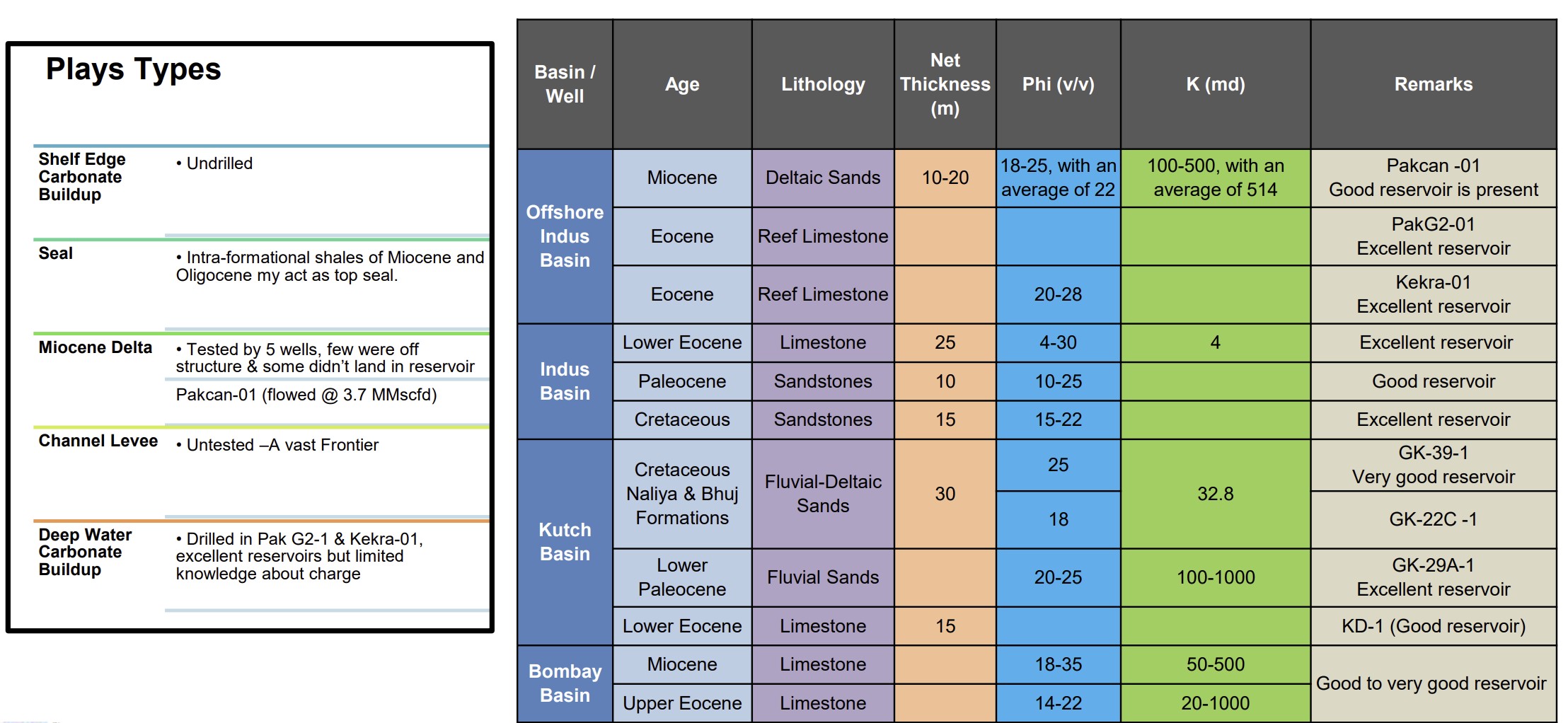
SOURCE ROCK CORRELATIONS INDUS BASIN & ADJACENT AREAS
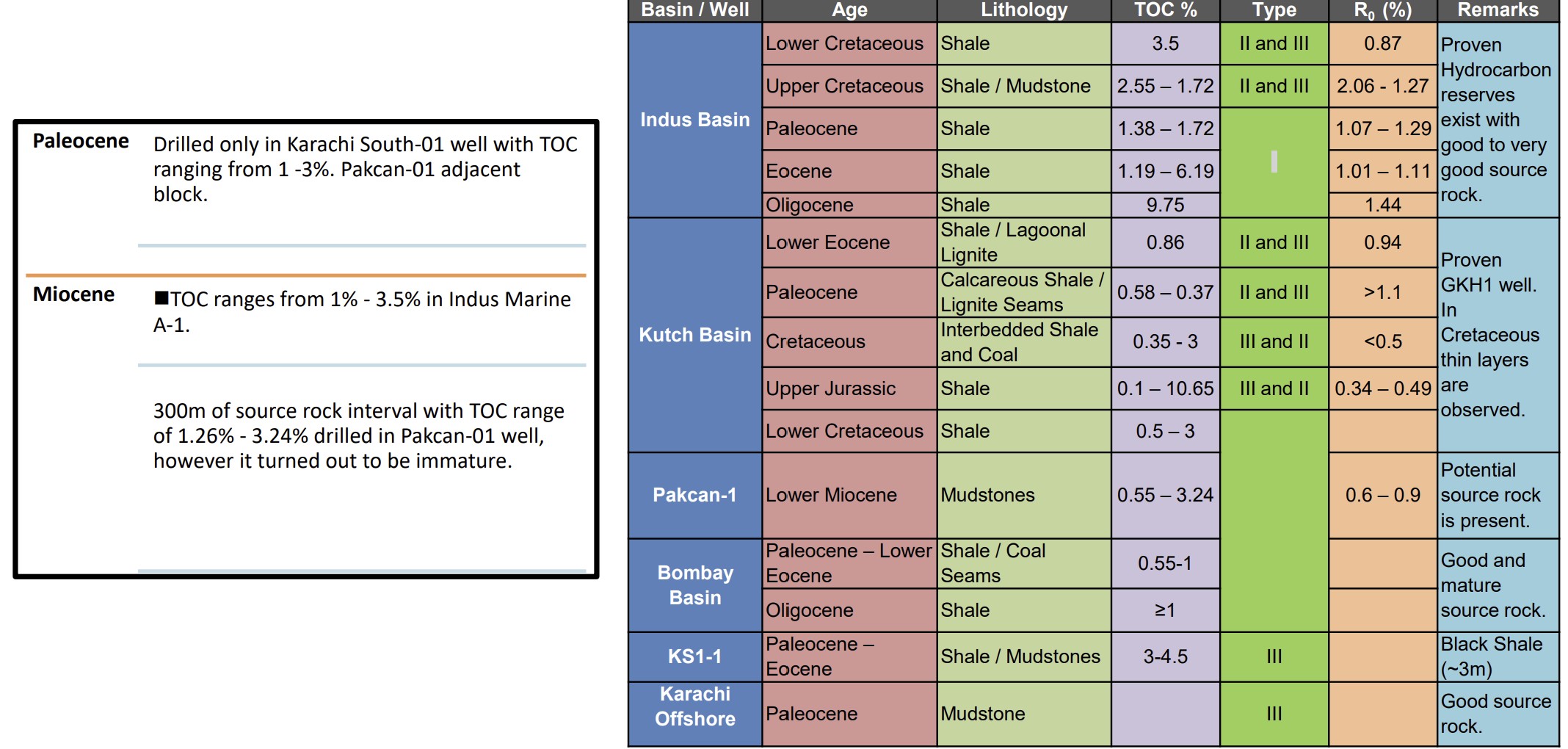
GEOLOGICAL PERSPECTIVE
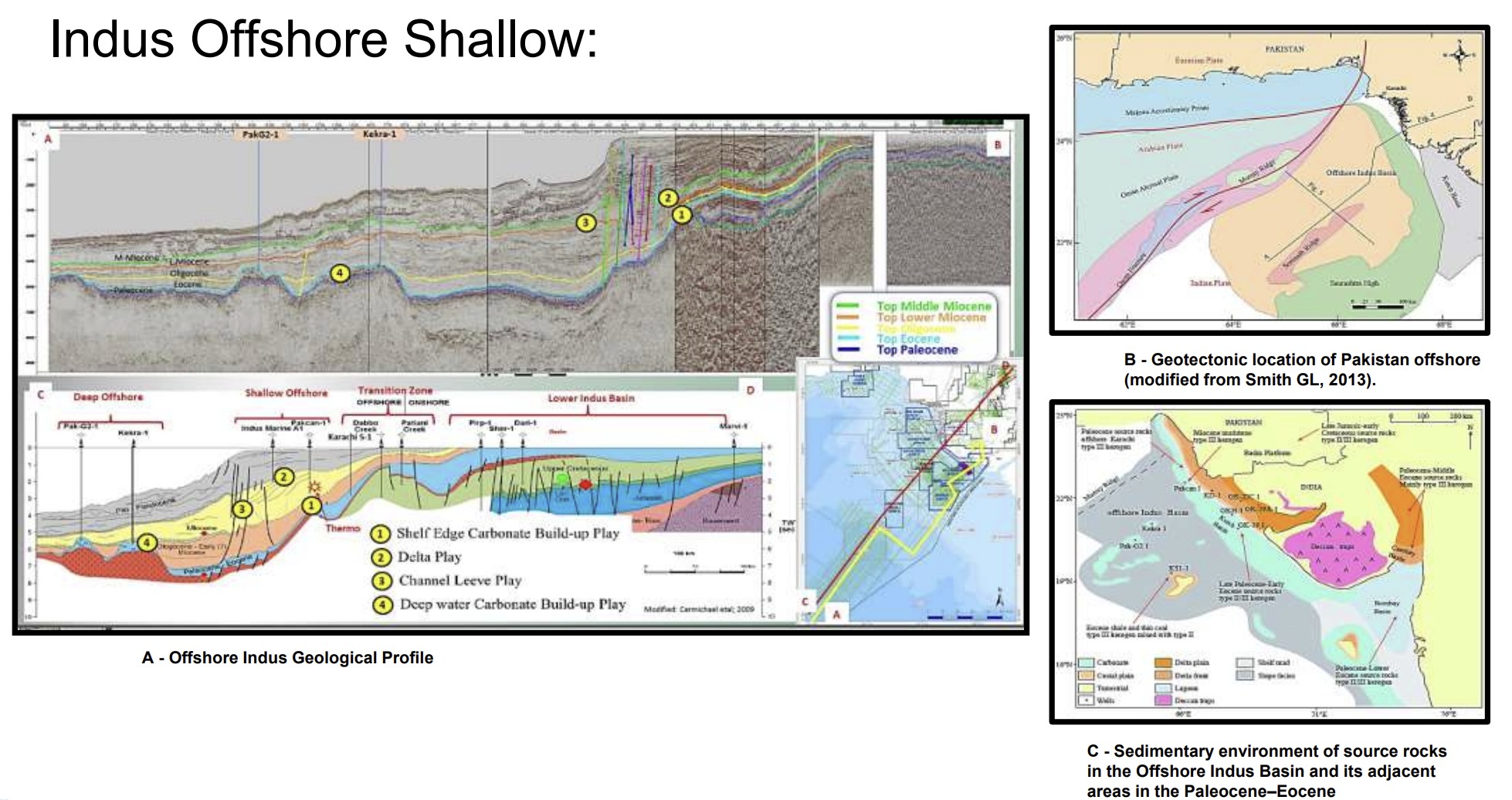
Data source: Sequence stratigraphic analysis of Eocene Rock Strata, Offshore Indus, southwest Pakistan. Natasha Khan, Khaista Rehman, Sajjad Ahmad, Jamil Khokher, M. Iqbal Hajana, M. Hanif. 2016
OFFSHORE BLOCK BIDDING ROUND 2025, MINISTRY OF ENERGY PETROLEUM DIVISION (DGPC)
Следующий Бассейн: West Florida